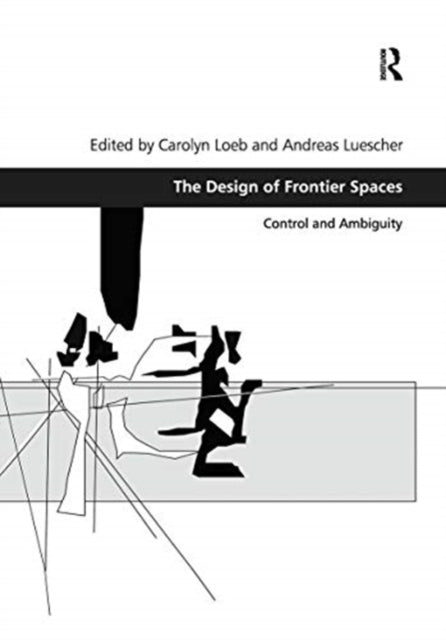Carolyn Loeb,Andreas Luescher
Design of Frontier Spaces: Control and Ambiguity
Design of Frontier Spaces: Control and Ambiguity
YOU SAVE £2.02
- Condition: Brand new
- UK Delivery times: Usually arrives within 2 - 3 working days
- UK Shipping: Fee starts at £2.39. Subject to product weight & dimension
Bulk ordering. Want 15 or more copies? Get a personalised quote and bigger discounts. Learn more about bulk orders.
Couldn't load pickup availability
- More about Design of Frontier Spaces: Control and Ambiguity
In a globalizing world, borders are in flux but remain significant. This volume explores how manipulations of space and design in frontier zones facilitate interactions and convey meanings about these sites and the experiences they embody. It brings together studies from Asia, Africa, the Middle East, Europe, and North America to consider borders of diverse sorts, including contemporary political frontiers, historical borders, borders within cities, and virtual borders. The text examines how spatial and architectural design decisions convey meaning, shape social practices, and stage memories of frontier zones.
Format: Paperback / softback
Length: 268 pages
Publication date: 31 March 2021
Publisher: Taylor & Francis Ltd
In the ever-evolving landscape of globalization, the concept of borders takes on a complex and multifaceted nature. While boundaries may shift and evolve, their significance remains unwavering. New borders emerge alongside the erasure of old ones, creating a dynamic tapestry of geopolitical boundaries. However, it is important to recognize that borders extend beyond mere lines on maps; they are spatial zones characterized by distinctive architectural, graphic, and other design elements. These elements serve as powerful signals that convey the nature of the space and play a crucial role in guiding behavior and social relations within it.
This volume delves into the intricate dynamics of manipulations of space and design in frontier zones, both historically and in the contemporary context. It explores how these spatial arrangements set the stage for specific types of interactions and convey profound meanings about these sites and the experiences they embody. Frontier zones serve a multitude of functions, including facilitating the passage of goods, information, and people while also defining and controlling access. By bringing together studies from diverse regions such as Asia, Africa, the Middle East, Europe, and North America, this collection of essays casts a wide net to consider borders of various kinds.
In the chapters that follow, readers will explore the complexities of contemporary political frontiers, situated within the broader context of examinations of historical borders, borders within cities, and virtual borders. This range of perspectives allows for a reflection on the shifts in how frontier zones are articulated and the impermanence of border emplacements. It also provides insights into potential scenarios for future frontiers, shaping our understanding of the geopolitical landscape and the social dynamics that accompany it.
One of the unique aspects of this text is its ability to bring together scholars from the arts and humanities to examine the role of spatial and architectural design decisions in conveying meaning, shaping social practices, and staging memories of frontier zones that no longer function as such. By integrating insights from these diverse fields, the book offers a holistic understanding of the complexities of borders and their impact on society.
Furthermore, it joins and expands discussions in social science disciplines, where considerations of border practices often overlook the role of built form and material culture more broadly in representing social practices. The book recognizes the significance of the built environment in shaping social interactions and narratives, highlighting the need for a more comprehensive approach to understanding border dynamics.
In conclusion, this volume provides a valuable contribution to the study of borders and their multifaceted nature. It sheds light on the ways in which manipulations of space and design in frontier zones shape interactions, convey meanings, and contribute to the formation of social practices. By exploring the historical and contemporary contexts of borders, the book offers insights into the complex dynamics of geopolitical boundaries and their impact on societies. It is a must-read for scholars, researchers, and policymakers interested in understanding the complexities of borders and their role in shaping our world.
Weight: 494g
Dimension: 246 x 174 (mm)
ISBN-13: 9780367787349
This item can be found in:
UK and International shipping information
UK and International shipping information
UK Delivery and returns information:
- Delivery within 2 - 3 days when ordering in the UK.
- Shipping fee for UK customers from £2.39. Fully tracked shipping service available.
- Returns policy: Return within 30 days of receipt for full refund.
International deliveries:
Shulph Ink now ships to Australia, Belgium, Canada, France, Germany, Ireland, Italy, India, Luxembourg Saudi Arabia, Singapore, Spain, Netherlands, New Zealand, United Arab Emirates, United States of America.
- Delivery times: within 5 - 10 days for international orders.
- Shipping fee: charges vary for overseas orders. Only tracked services are available for most international orders. Some countries have untracked shipping options.
- Customs charges: If ordering to addresses outside the United Kingdom, you may or may not incur additional customs and duties fees during local delivery.


